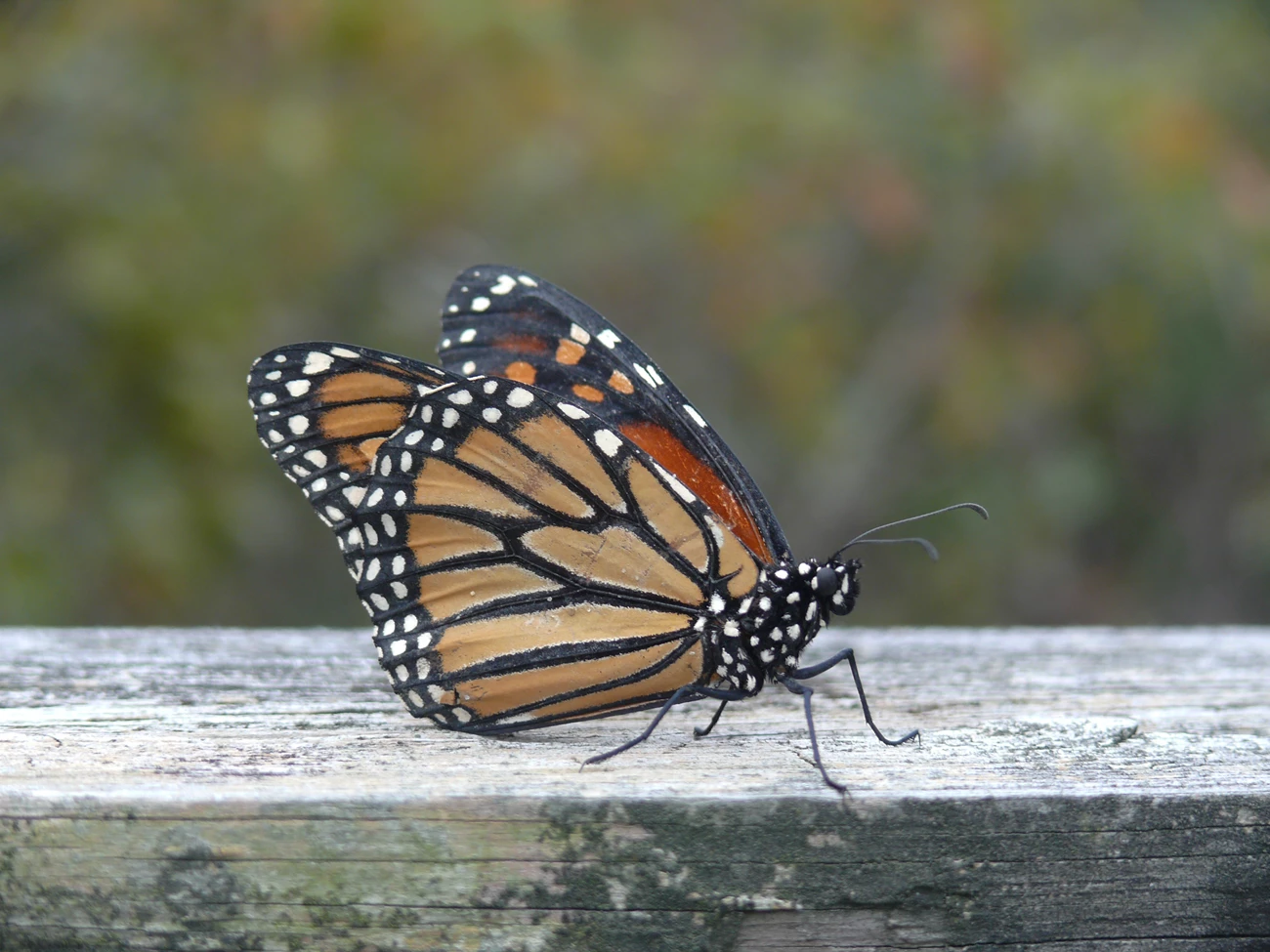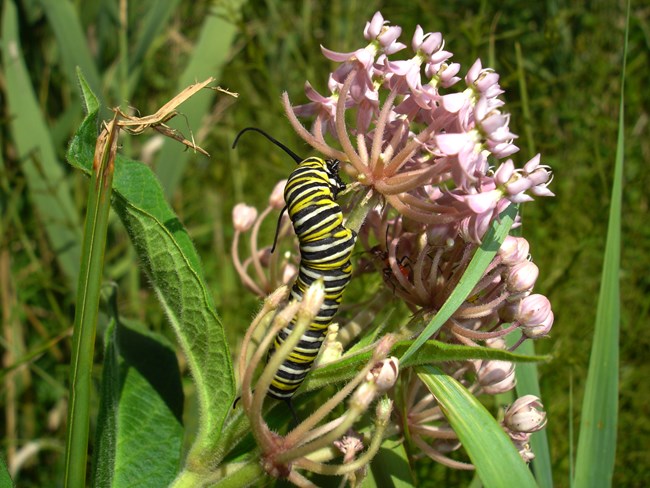
Monarch Butterflies Fire Island National Seashore is situated along an important migratory corridor for animals including birds, insects, bats and fish. One of the species that can be seen here during fall migration is the monarch butterfly (Danaus plexippus). From mid-August through late September or early October, thousands of these delicate insects stop to rest and feed on Fire Island as they make their way south for the winter. For the butterflies you see on Fire Island, this is a journey of more than 2,500 miles! The beautiful orange and black adult monarchs we see fluttering above the dunes on Fire Island each fall are flying south to the safety of Oyamel Fir Forests, dense stands of evergreens found at high altitudes in the mountains of central Mexico. There, the butterflies cluster together in the trees for safety from predators and from the elements. The following spring, with warmer temperatures and increasing day length the overwintering butterflies adults emerge from the forests and begin their multi-generational return trip north. 
The monarchs that overwintered in Mexico will breed and lay eggs along their journey north. It is their offspring and successive generations that continue the northerly journey to the northern United States and Canada. Unlike the fall monarch migrants that can survive for up to nine months, their northbound relatives live for two to five weeks before reproducing. Eggs are laid on milkweed plants and hatch to become larvae, or caterpillars, that feed solely on the leaves of milkweed to support their rapid growth. The caterpillar then attaches itself to a milkweed plant and transforms into a blue-green chrysalis. It takes about a month for monarchs to progress from the egg stage to adult butterfly. On Fire Island swamp milkweed (Asclepias incarnata), found in wetland areas, and common milkweed (Asclepias syriaca), found in coastal sandy fields, serve as host plants for monarch caterpillars. Adult monarchs feed on the nectar of milkweed flowers and other wildflowers as well. In the fall monarchs feed on a variety of wildflowers to build up energy reserves for their journey to the mountains of Central Mexico. Important nectar sources on Fire Island include seaside goldenrod (Solidago sempervirens), dogbane (Apocynum spp), aster (Aster spp.), common boneset (Eupatorium perfoliatum), and groundsel tree (Baccharis halimifolia). Monarchs are also found at the William Floyd Estate, a unit of Fire Island National Seashore located on Long Island.
The requested video is no longer available.
|
Last updated: June 22, 2015
